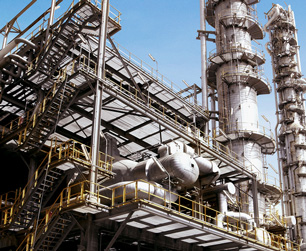1,4-Dioxane

1,4-Dioxane is a chemical used in a wide range of industries. It's used as a dissolving agent for chemicals, resins, oils, waxes, paints and dyes, and in the manufacture of adhesives, sealants, and pharmaceuticals. According to the EPA, it is also a contaminant of some ingredients used in cosmetics and personal care products.
According to the EPA, 1,4-Dioxane is expected to be highly mobile in soil, and does not readily biodegrade in the environment, making it a potential groundwater contaminant. It can arrive in drinking water through leaching from hazardous waste sites.
Health Effects of 1,4-Dioxane
Acute exposure to large amounts of 1,4-dioxane has been shown to cause symptoms of nervous system depression and lesions on the stomach, lungs, liver and kidneys.
Animals studies have shown evidence of carcinogenicity, and comparitive studies of exposed workers have shown higher incindences of liver cancer. However, human studies are limited so far. and the International Agency for Research on Cancer classifies 1,4-Dioxane as being “possibly carcinogenic” to humans.
Water Treatment for 1,4-Dioxane
According to the WHO, because of its high solubility in water, 1,4-dioxane is not treatable using conventional methods like granular activated carbon (GAC alone can remove about 50%). It can be effectively treated with “biological activated carbon,” a type of activated carbon with a fixed biomass, or treatments involving UV or ozonation in combination with hydrogen peroxide.
Sources: EPA, WHO, Photo: WikiMedia, author: SeclSite Index
Filtration Systems
- Aeration for Iron & Sulfide
- Backwashing Filters
(whole house & well units)
- Chlorine & Chemical Injectors
- Countertop Water Filters
- Emergency Filters
- Garden Hose Filters
- Reverse Osmosis, Residential
- Reverse Osmosis, Commercial
- Shower Filters
- Specialty Filters
- Ultraviolet Systems
- Undersink Filters
- Water Softeners
- Whole House Filters
Cartridges
Parts
- Replacement Parts
- Faucets
- Filter Media
- Fittings
- Housings
- O-rings
- Pumps
- Pura UV
- R.O. Parts
- R.O. Tanks
- R.O. Booster Pump
- VIQUA UV